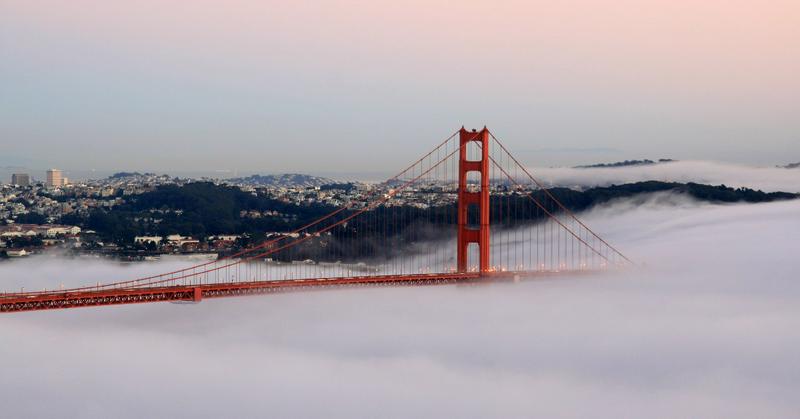San Francisco's 1904 Black Plague Scare (And How It Was Covered Up)
By | May 12, 2020

The bubonic plague is one of the most catastrophic diseases to ever befall mankind, claiming hundreds of millions of lives throughout the centuries. During the mid-1300s, the bacterium known formally as yersinia pestis was responsible for wiping out over half of Europe's population, an episode commonly referred to as the Black Death. It's an ugly and painful way to go. Soon after infection comes wild fevers, nausea, and "buboes," or massively swollen and extremely tender lymph nodes that reside in the armpits, neck, and groin. After that, the body begins to rapidly rot, and the skin and nails turn black, all while the person is still alive, though not for long. The mortality rate of the bubonic plague during the Black Death ranged anywhere from 60–100%, depending on where the infection took hold.

Over the centuries, the bacterial beast has reared its ugly head again and again, but thanks to the Venetian invention of the quarantine, it was relatively well-contained following that Black Death business. At least, it was until 1900, when the Plague finally made its way to America's teeming shores by way of the S.S. Australia steamship from Hawaii (which was not yet a state) to San Francisco. Hawaii had suffered a grotesque outbreak only a few years before and China a few years before that, so it's likely that San Francisco's misfortunes stemmed from the great 1855 Third Plague Pandemic originating in Hong Kong.
The medical community of San Francisco were no slouches, however. After learning of Hawaii's outbreak, they began prepping for the likely spread to the port city by quarantining incoming ships and implementing a mass sanitation program to regularly clear out trash in the city and remove the rodent population. Unfortunately, we know today that it's really the fleas that carry the disease and not the rats themselves, so the Plague sneaked into the city despite their best efforts, hooking its merciless claws into Chinatown. The Board of Health reacted immediately by instituting a police-enforced quarantine of the area, but this action was unpopular with both the citizens of Chinatown and the local government, who were concerned that news of the outbreak would hurt tourism and shutting down businesses would deal massive damage to the economy. As Mark Twain (probably never) said, "History doesn't repeat itself, but it often rhymes."

The quarantine was quickly lifted in favor of door-to-door doctors who attempted to inspect residents individually. An extremely aggressive approach was initially taken, with doctors proffering untested vaccines, but the residents of Chinatown understandably balked at the idea. Although the vaccines were shown to be safe, those of Chinese descent suspected they were victims of a racial bias, since white people were free to come and go as they pleased while Chinese residents were monitored and controlled. Chinatown went to the courts, and the courts agreed that the measures were at least somewhat racially motivated, so all quarantine efforts were ended.
Bodies of the dead began piling up, but due to government pressure, the Board of Health was reluctant to take any other drastic action. In fact, California Governor Henry Gage went so far as to deny that the outbreak even existed, calling the doctors a bunch of "plague fakers" despite the fact that the deadly strain had already been identified in laboratories. Gage's decision to cover up the festering epidemic led to a smear campaign against several leading health experts, notably Joseph J. Kinyon, who was in charge of the containment efforts. Kinyon was highly respected in his field, and many historians today regard him somewhat as the father of the National Institute of Health (NIH) for his efforts in the creation of its precursor, the U.S. Hygienic Laboratory. Still, he refused to aid the cover-up and even turned down outright bribes from parties interested in keeping news of a California Plague outbreak a secret, so his honesty was rewarded with a demotion and permanent relocation to a lab in Detroit. Detroit.

Gage did everything in his power, including threatening the University of California's endowment if Berkeley continued to study the disease, to keep the cat in the bag. Nevertheless, the word eventually got out as newspapers across the country began printing articles about people dropping like flies in San Fran's Chinatown. After 100 deaths, the federal government and Gage's Republicans Party turned on the governor, swiftly mobilizing their joint forces to squeeze him out of power. Disgraced and despised, Gage left office in 1903. He was replaced by George Pardee, a medical doctor.
The plague continued to take lives, but with new leadership willing to cooperate with the medical community, the government did a much better job at "flattening the curve," as we would say today. Sadly, Chinatown's woes were far from over. At 5:12 A.M. on April 18, 1906, San Francisco suffered an absolutely devastating 7.9 magnitude earthquake, the deadliest in U.S. history. Almost every inch of Chinatown burned to ashes in the resulting fires, yet somehow, even that wasn't enough to truly eradicate the disease. In fact, the bubonic plague resides in America to this very day, most notably in the Western states. Somewhere, this virulent monster is looming inside of a flea, just waiting to wreak its havoc upon the world again. Joke's on you, though, Yersinia. We've got antibiotics now.

